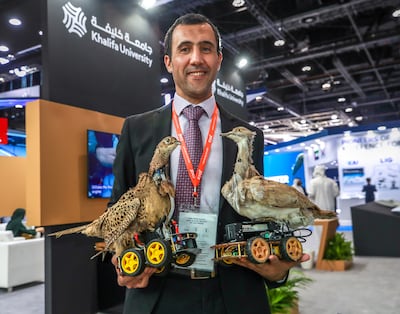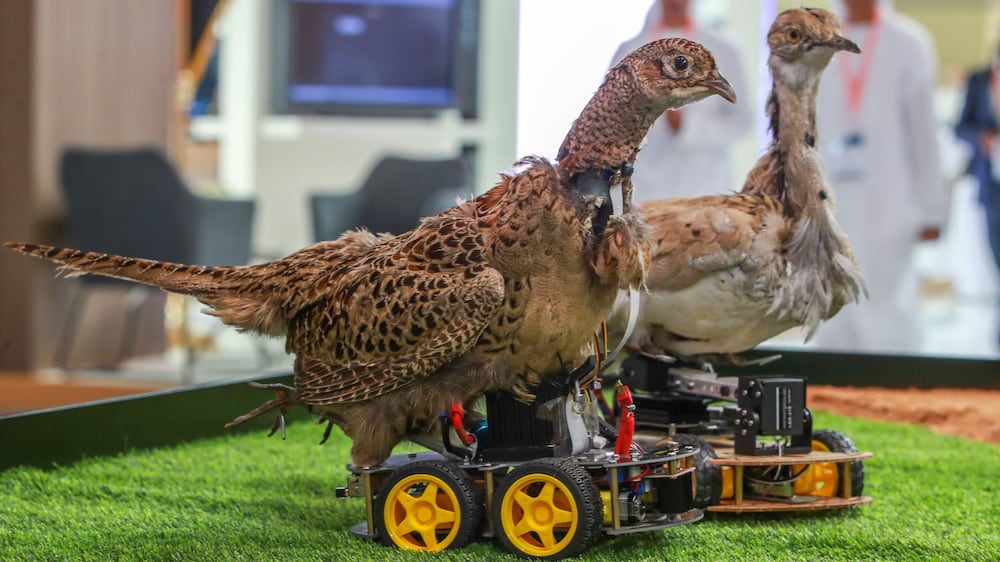An unassuming robotic bird decoy on display at a major autonomous technology conference in Abu Dhabi could hold the key to saving the vulnerable houbara bustard species.
Found across North Africa, Central Asia and the Arabian Peninsula, houbara birds are often sought after by falconers because they are the traditional prey for hunting birds.
Having been driven to the brink of extinction amid a proliferation of smuggling across regional borders, researchers now hope robot development could give the rare bird species a lifeline by allowing closer and more detailed movement observations and by improving genetic diversity.
"The houbara is a very sensitive animal,” said Lyes Saad Saoud, a post-doctoral fellow at Khalifa University, which is spearheading development of the robot through a partnership with the UAE-based International Fund for Houbara Conservation.

“We cannot just send humans over to try to find them and collect data. It just wouldn’t work in most cases.”
The robot houbara contains a high-definition camera, audio recorder, various sensors and motors that move its neck.
“The information collected from the bird can be recorded and sent right to the lab without any major disruption,” Mr Saoud said.
They also discreetly contain batteries and a Raspberry Pi single board computer.
Information collected from the robots could range from simple observation of bird behaviour to semen collection that might improve genetic diversity, according to Khalifa University’s Centre for Autonomous Robotic Systems.
The robots are among several sustainability and conservation-related projects being showcased at the Unmanned Systems Exhibition and the Simulation and Training Exhibition in Abu Dhabi this week.
Robots resembling fish and squid, described as underwater soft drones by Khalifa University, could efficiently and safely inspect coral reefs, while also potentially being used to monitor the health of species.
As for the houbara, efforts have ramped up in recent years to conserve the species through protected areas, captive-breeding and reintroduction programmes.
Once found across North Africa, Central Asia, the Arabian Peninsula, Mongolia and Iran, both species of houbara – North African and Asian – are classified as vulnerable in the IUCN Red List of Threatened Species, with a decreasing population trend.
The UAE has sought to arrest this decline with a decades-long conservation drive.
More than 40 years ago, the UAE began a multimillion-dirham programme to repopulate natural habitats with captive-bred birds.
The International Fund for Houbara Conservation, via the National Avian Research Centre (NARC) and Sheikh Khalifa Houbara Breeding Centre in Abu Dhabi, have developed one of the largest repopulation programmes of an endangered species in the world.







